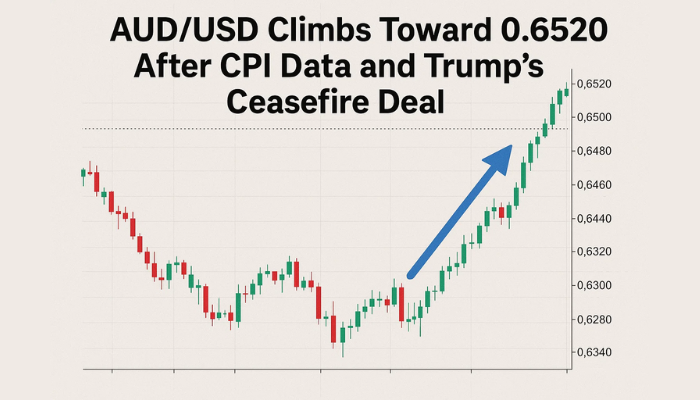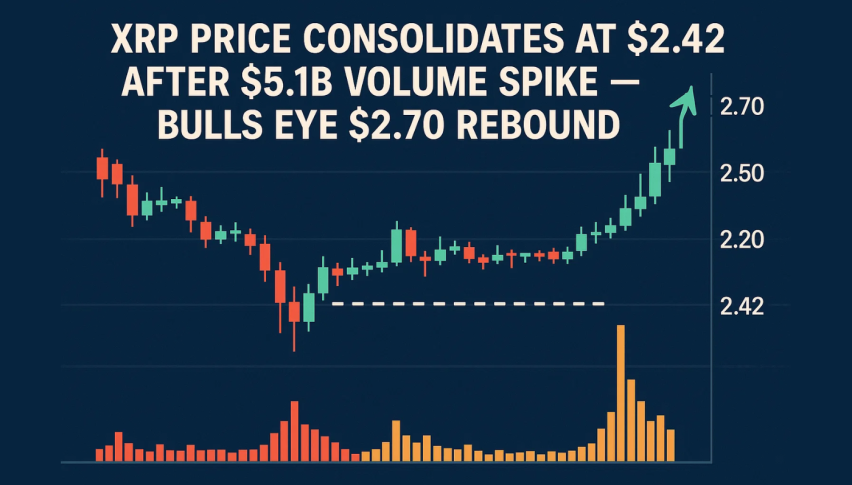AUD/USD Climbs Toward 0.6520 After CPI Data and Trump’s Ceasefire Deal
The Australian dollar extended its upside momentum on Tuesday, climbing toward 0.6520 following a combination of geopolitical relief...

Quick overview
- The Australian dollar rose towards 0.6520, driven by geopolitical relief and soft inflation data.
- A ceasefire deal between Israel and Iran, brokered by Donald Trump, boosted global risk appetite and weakened the U.S. dollar.
- Australia's Q2 Consumer Price Index showed a slight decline, reinforcing the Reserve Bank of Australia's cautious stance.
- AUD/USD is at a critical level, with potential for a breakout above 0.6520 if market sentiment remains positive.
The Australian dollar extended its upside momentum on Tuesday, climbing toward 0.6520 following a combination of geopolitical relief, soft inflation data, and expectations for a dovish U.S. Federal Reserve. AUD/USD printed fresh one-week highs, buoyed by renewed global risk appetite after former U.S. President Donald Trump brokered a ceasefire deal between Israel and Iran.
The ceasefire, announced after days of regional escalation, helped de-risk markets, dragging down the U.S. dollar and safe-haven demand. Crude oil retreated sharply, while risk-on flows returned to commodity-linked currencies like the Australian dollar.
At home, Australia’s Q2 Consumer Price Index (CPI) came in slightly cooler than expected at 2.1% y/y, down from 2.4%, reinforcing the Reserve Bank of Australia’s (RBA) cautious stance. With inflation retreating and growth steady, the data gave bulls further reason to hold long positions—particularly amid broader USD weakness.
Fed Pivot Bets Add Pressure on the USD
Forex traders are now focusing on potential change in the U.S. policy. Remarks from Fed officials, including Michelle Bowman and Christopher Waller, signaled that tariff which are linked to inflation may have less severe impact than previously forecasted. Hence, it’s leaving room for rate cuts. According to FedWatch data, markets are now pricing in more than 60 basis points of easing by year-end, with the first cut potentially arriving in September.
Later today, Fed Chair Jerome Powell’s testimony could provide more clarity. Any dovish tilt or acknowledgment of softer consumer data (including New Home Sales, expected at 694K vs. 743K prior) could weigh further on the greenback.
This policy divergence—combined with a broadly improving Aussie macro picture—has positioned AUD/USD for a potential technical breakout.
AUD/USD Technical Setup: Bulls Eye 0.6520 Break
On the 4-hour chart, AUD/USD is testing a descending trendline just below the 0.6520 mark, a level that’s acted as resistance since mid-June. Price has reclaimed the 50-period EMA (now at 0.6483), and recent price action has been marked by higher lows and neutral candles—often a precursor to breakout momentum.

The MACD is supportive of upside, having crossed bullishly with a rising histogram, signaling underlying strength.
Trade Signals to Watch:
- Breakout Long: Close above 0.6520 with bullish engulfing; targets: 0.6546 and 0.6571.
- Pullback Long: Entry on dip to 0.6480–0.6488 support; look for hammer candle and stop-loss under 0.6446.
- Bearish Scenario: Failure at trendline with rejection (e.g., shooting star) may send price toward 0.6446 or 0.6419.
Conclusion:
AUD/USD is trading at a critical inflection point. If Powell leans dovish and risk sentiment stays buoyant, a confirmed breakout above 0.6520 could unlock further upside in the sessions ahead.
- Check out our free forex signals
- Follow the top economic events on FX Leaders economic calendar
- Trade better, discover more Forex Trading Strategies
- Open a FREE Trading Account


